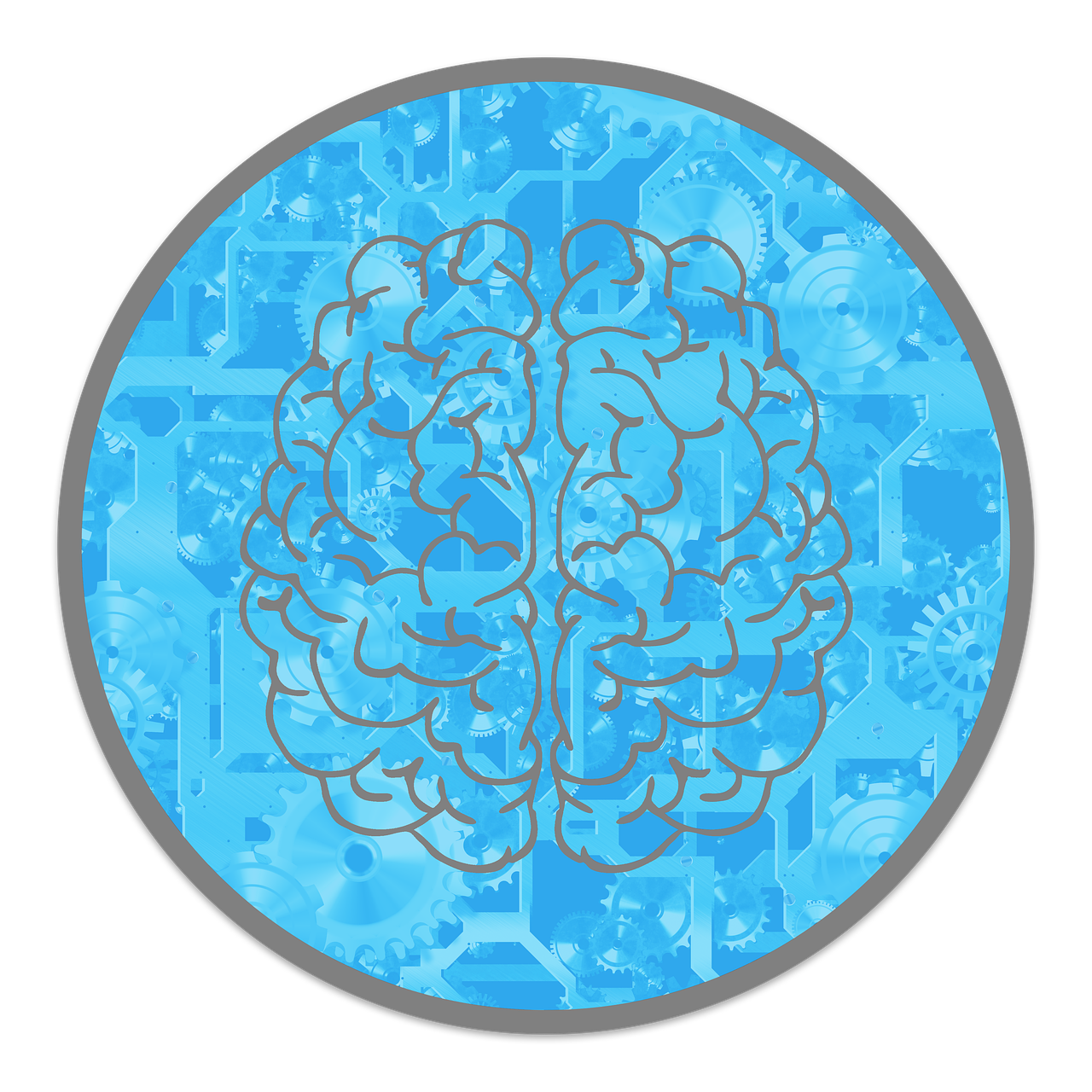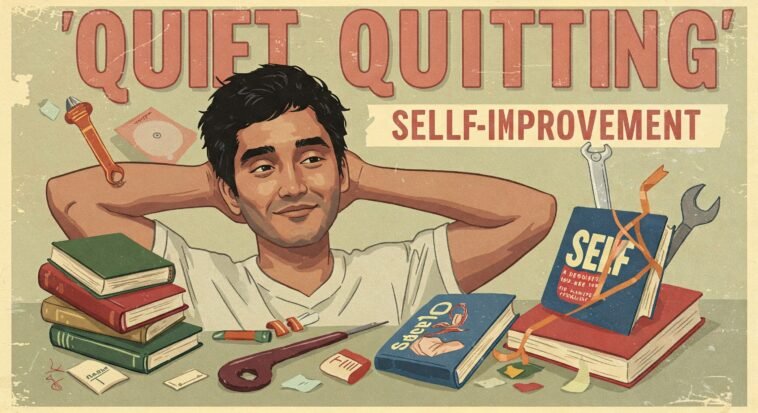
Every scroll on Instagram screams hustle harder—5 AM workouts, side hustles, book-a-week clubs.
It’s like everyone’s in a productivity Olympics… and you didn’t get the memo.
But a quiet rebellion is brewing. Call it the “quiet quitting” of self-improvement.
It’s not about being lazy—it’s about being done with burnout.
Think of it like the anti-Grindset. More Ted Lasso, less Wolf of Wall Street.
People are choosing rest, real goals, and sanity over chasing gold stars.
Turns out, doing less might actually help you grow more. Wild, right?
Let’s talk about how slowing down could be the smartest power move you make.
What Is the “Quiet Quitting” of Self-Improvement?
Borrowing a page from the workplace trend where employees do just enough to meet expectations (and stop glorifying burnout), quiet quitting has found its way into personal growth.
But this time, it’s not about slacking—it’s about strategic scaling back.
In the self-help world, it looks like this: ditching hyper-optimized morning routines, closing all those productivity apps, and saying “no thanks” to the pressure to become the next Elon Musk before breakfast.
It’s not quitting—it’s recalibrating
This mindset isn’t about giving up. It’s about getting smart.
People are trading hustle for intention and asking: “What actually works for me?”
Here’s what it means in action:
- Letting go of over-optimization (No, you don’t need a bullet journal and three habit apps)
- Putting mental health before metrics (Rest is productive—ask anyone who’s ever binge-watched Ted Lasso and felt better after)
- Choosing depth over breadth (Better to go all-in on what matters than half-try everything)
Research backs it up: a 2022 study by the American Psychological Association found that 79% of adults felt stressed by their own performance standards. Turns out, chasing perfection is… exhausting.
This quieter, calmer path isn’t lazy—it’s liberating.
It’s about making space for growth that actually sticks—and feels good doing it.

Why the Traditional Self-Improvement Model Is Flawed
The self-improvement industry is booming—apps, courses, coaches, planners, you name it.
But while the tools aren’t the problem, the pressure they create is.
Somewhere along the way, growth turned into a full-time job—with no PTO.
Here’s what’s not working:
1. Hustle culture = Burnout culture
We’ve glamorized “rise and grind” like it’s a personality trait.
But constantly doing more leads to burnout, not breakthroughs.
The World Health Organization now officially recognizes burnout as a workplace condition, marked by:
Emotional exhaustion (a.k.a. the Sunday Scaries… every day)
- Detachment (hello, autopilot mode)
- Feeling ineffective (like spinning your wheels in sand)
- Even superheroes take off the cape sometimes. You’re not a robot—and that’s a good thing.
2. Quantity over quality
Trying to hit every self-help goal—run a marathon, read 52 books, meditate daily, master Spanish—is like trying to stream all of Netflix at once.
You end up overwhelmed, underwhelmed, and halfway through 10 things with nothing finished.
3. Comparison culture is sneaky
Social media turns personal growth into a competition.
Everyone’s showing off highlight reels—morning routines, perfectly curated desks, “read 100 books this year!” posts.
It creates toxic positivity, where we feel like we have to smile through stress and constantly level up.
The Benefits of Doing Less
Turns out, slowing down isn’t slacking off—it’s a power move.
When we stop trying to do it all, we make space for what actually matters.
Here’s what doing less can do more of:
More clarity, better focus
When you cut the noise, you finally hear what matters.
Fewer goals mean deeper focus—and better results.
Cognitive psychology backs it up: multitasking tanks performance and leaves you feeling scattered (ever open five tabs and forget why you opened any of them?).
Better mental health
Slowing your pace isn’t falling behind—it’s choosing peace.
When you stop sprinting through life:
- Anxiety drops
- Imposter syndrome chills out
- Sleep gets better (no more doom-scrolling at midnight)
Mindfulness and rest become part of the plan—not things you “earn” later.
Even Iron Man needed a recharge.
More you, less everyone else
When you stop chasing other people’s definitions of success, you start living by your own.
That shift builds real confidence and purpose.
Less “fake it till you make it,” more “this is who I am.”
Doing less helps you show up as yourself—not the ultra-optimized, hyper-productive version Instagram told you to be.

How to Embrace “Quiet Quitting” in Self-Improvement
“Quiet quitting” self-improvement doesn’t mean tossing your goals—it means trimming the fluff and making space for what actually fuels you.
Here’s how to shift gears without losing momentum:
1. Audit your habits like a boss
Before you Marie Kondo your life, ask yourself:
- Is this goal really mine?
- Am I doing this because I want to—or because I feel like I should?
- Is this habit giving me energy or just draining my soul?
If your habit tracker feels like a report card, it might be time to rethink the assignment.
2. Pick one thing, do it well
Forget chasing five new habits at once.
Choose one meaningful focus—daily journaling, evening walks, whatever lights you up. It’s not about going hard; it’s about showing up.
3. Schedule rest like it’s a meeting with Beyoncé
Rest isn’t a luxury—it’s your battery charger.
Protect your downtime like it’s VIP access:
- Time-block actual chill time
- Take mini digital detoxes (yes, even from productivity TikTok)
- Say “no” to what doesn’t serve you—without guilt
4. Ditch the perfection pressure
Progress isn’t a straight line—it’s more like a Spotify playlist on shuffle.
Some days hit, some don’t. And that’s okay.
Don’t wait for the perfect mood, setup, or planner layout.
Messy action beats perfect inaction every time.
5. Reclaim your joy
Hobbies aren’t just for kids and Pinterest moms.
Reconnect with what you love doing just because.
Painting, baking, dancing in your kitchen—whatever reminds you that life isn’t just about goals.
Joy fuels growth better than guilt ever will.
What the Research Says
“Less is more” isn’t just a minimalist motto—it’s backed by serious brain science.
When we stop piling on goals and start trimming the excess, our minds actually function better.
Here’s how:
The Zeigarnik effect
Our brains obsess over unfinished tasks.
When we juggle too many goals, we overload our mental RAM.
By doing less, we clear the clutter and calm the mind.
Think of it like closing 20 browser tabs—you finally get to breathe.
Flow Theory (Mihaly Csikszentmihalyi, 1990)
Want to hit that sweet spot of focus where time disappears? That’s flow.
But you don’t get there by drowning in to-dos.
Flow happens when you’re deeply focused on one challenge that feels doable—not 10 you’re half-dreading.
Basically: Don’t try to speedrun life like it’s a video game. Play it like an RPG—one thoughtful quest at a time.
Minimalism boosts wellbeing
A 2020 Journal of Positive Psychology study found that people who practice intentional minimalism—doing and owning less, on purpose—report more life satisfaction.
Turns out, peace isn’t in the planner. It’s in the pause.

Quiet Quitting Isn’t Giving Up — It’s Waking Up
This movement is not a rejection of growth — it’s a reclamation of balance.
In a culture obsessed with speed, optimization, and achievement, quietly quitting the race can be the boldest move of all.
By doing less, you can:
- Do it more meaningfully
- Do it more joyfully
- And ultimately, achieve more of what truly matters
So the next time you’re tempted to add one more habit, ask instead: What can I let go of?
Final Thoughts
Quiet quitting self-improvement isn’t just another self-help trend—it’s the upgrade we didn’t know we needed.
As more people hit pause on the productivity hamster wheel, a new model is taking shape—one that’s intentional, human, and actually livable.
And here’s the truth:
You don’t need a perfect morning routine, five new habits, and a color-coded vision board to be worthy.
You don’t need to “optimize” every second to grow.



